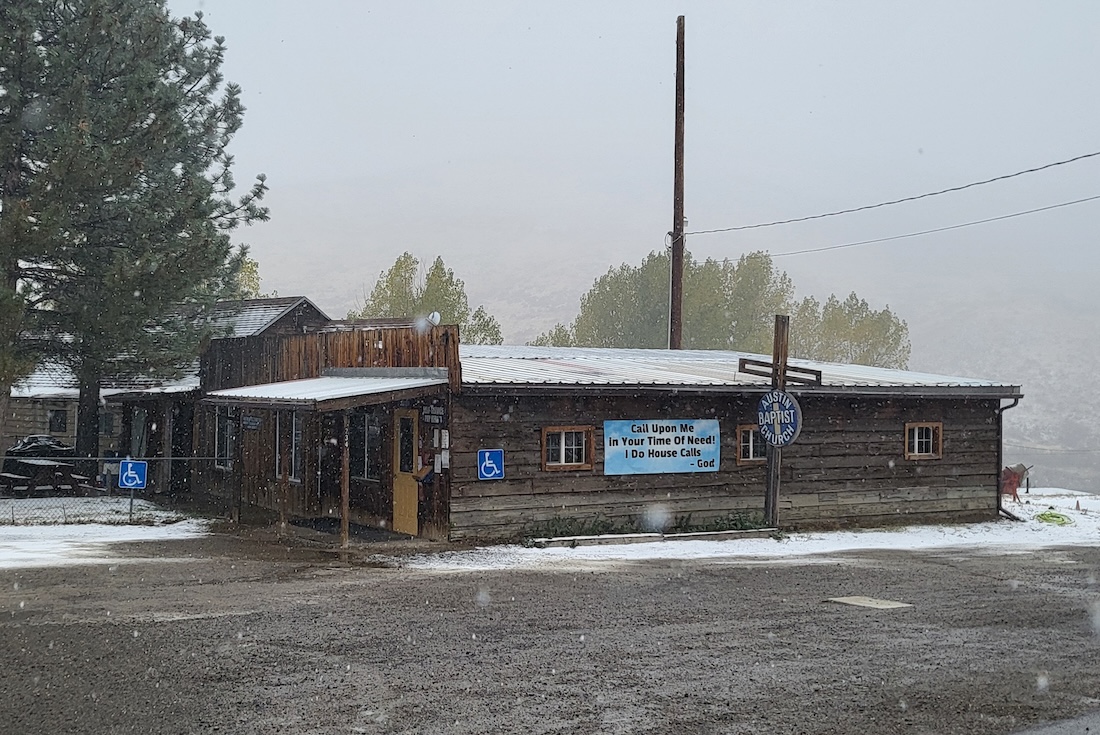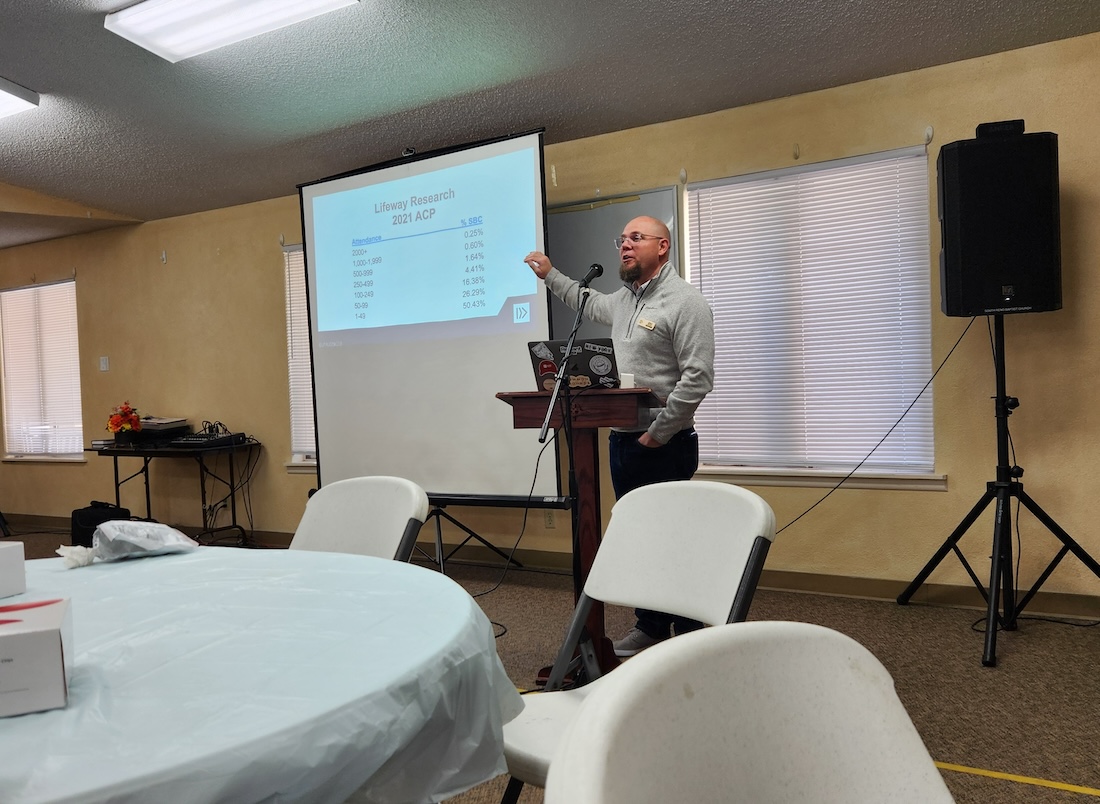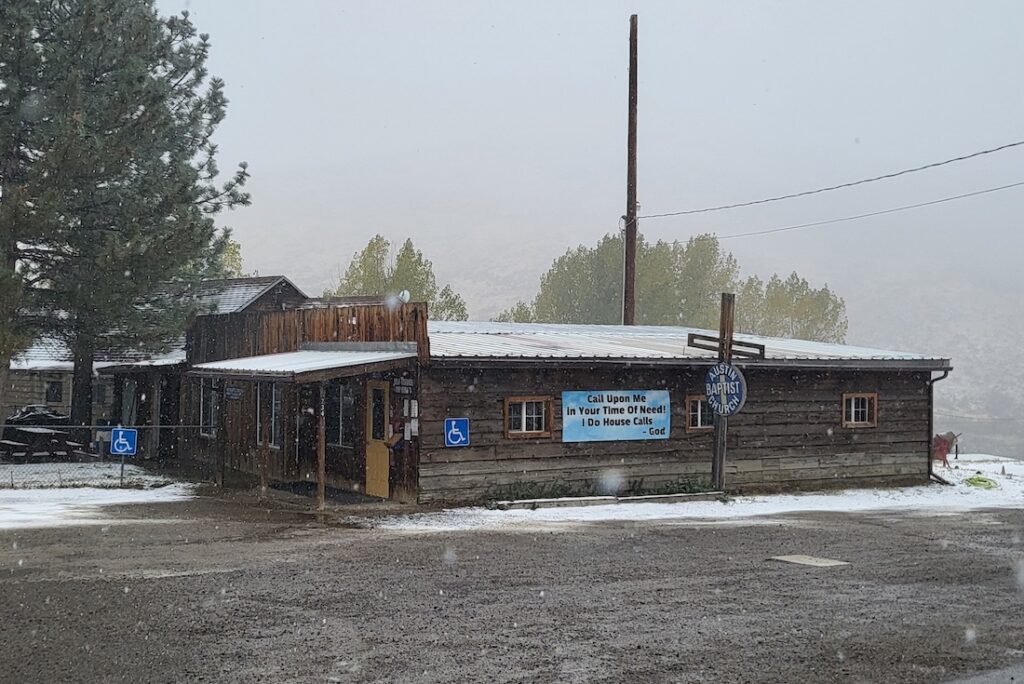AUSTIN, Nev. – Smack dab in the middle of Nevada is the tiny town of Austin, home to First Baptist Church, where Charles Vaughn has been pastor since 2008. The population has declined to about 100 people, down from 167 four years ago. Fifteen to 25 people attend services.
Vaughn also pastors Yomba Baptist Church on the nearby Yomba Indian Reservation where the town’s population is down to about 25. Usual worship attendance is 3 to 5.
Vaughn lives about 75 miles in any direction from the nearest Southern Baptist church.

He deals with the isolation because, “Bottom line, I’ve got a wife who loves me,” Vaughn said. “I try to go to the monthly associational meetings just for the fellowship. And we pour ourselves into other people, which keeps us from loneliness that could become an issue.
“We’re not the only ones in remote areas who struggle with it,” Vaughn continued. “Helping people find the Lord opens the door to communication with them that helps them deal with the loneliness as well.”
Vaughn attended the mid-October annual meeting of the Nevada Baptist Convention because, “rural churches don’t always have opportunities to engage with the new concepts people are talking about,” the rural pastor said. “That’s why the state conventions and associations are so important to rural churches. They help bridge the gap.”
The annual meeting “had topics I was interested in,” Vaughn continued. He said he wanted to attend a workshop about the Evangelism Toolkit produced by the North American Mission Board (NAMB) and learn some new ideas about what other pastors of rural churches are doing by participating in a seminar led by Kyle Bueermann, rural specialist for NAMB’s Replant team.
“Communities will be changed when the churches love the communities they’re in,” Bueermann said in a message based on 2 Cor. 5:16-21. “The church exists for the sake of the community.”
Statistics tell the tale, Bueermann said.
About 800 churches in the Southern Baptist Convention close each year, an average of 15 each week. Eighty percent are in metropolitan areas of more than 50,000 residents. Nine percent are in “micropolitan” areas of 10,000 or less.
“When an urban church closes, there’s often another SBC church within a short driving distance,” Bueermann said. “But if a church closes in a rural community, the only evangelical witness in 50 to 60 miles in any direction might be lost.”
“But there is hope,” Bueermann said. “It’s both-and: plant and revitalize.”
Mark Clifton, NAMB’s executive director of church replanting and rural ministry, published an updated version of “Reclaiming Glory” in January 2023. Bueermann listed the book’s six main points and added commentary:
- Pray without ceasing
- Love the remaining members (realize these are the people God thought you could lead)
- Exegete your community (find out who lives in it now, rather than 20 years ago)
- Simplify your strategy (being bogged down with committees, programs, structure is not good for small churches)
- Focus on reaching young men (go where they hang out ie: local gym, become a volunteer firefighter or police chaplain)
- Make disciples who make disciples.

“We need to rethink our definition of rural,” Bueermann said. “Rather than referring to a geographical area, change that to refer a people group. It’s said, ‘If you’re rural you’ll know it.’
“Rurality encompasses a sense of isolation, cooperative living – such as farmers’ co-ops – and small-town values,” he continued. “Rural churches matter! Our smaller churches, they’re the backbone of the SBC.”
Common denominators to churches closing include members not seeing the danger soon enough.
“Often churches don’t get serious about it until they say, ‘We can’t pay our light bill anymore,’” Bueermann said.
But that’s still not too late, when Southern Baptists stand in the gap.
Around 92 percent of the churches across the SBC have fewer than 250 in Sunday morning worship, and around 50 percent have fewer than 50.
“That’s important for pastors to know,” Bueermann said. “That the vast majority of churches in the SBC look just like you. I wish I had that understanding when I was a pastor in New Mexico.
“For churches with a pattern of decline, there is hope for them. God can breathe new life into declining and dying churches. It takes a pastor who knows his church and loves his church as it exists now,” he continued. “He can’t love his vision more than he loves his people. Unless the pastor loves his church and his community, he’s not going to lead his church to a place of health.”
Bueermann quoted Mark Clifton as saying, “A revitalized church starts with a revitalized pastor.”
A church that is making disciples, making the community noticeably better, is a church that appears to be healthy, Bueermann said.
“If the church ceased to exist, would there be a hole in the community?” the rural ministries strategist asked.
One example of a church’s involvement in its community: At First Southern Baptist Church in Glenrock, Wyo., teen volunteers, at the request of the city, maintain the flower garden at the town’s entrance.
A church that reaches out to help other churches is a church that shows its health, the rural strategist said.
A Southern Baptist church in Englewood, Colo., now called Calvary Church that replanted with a new pastor has now planted and replanted more than 20 churches. Crosspoint Church in Hutchinson, Kansas, has formed a network with 14 rural Kansas churches by providing location pastors and connection with the Crosspoint family. Cornerstone Bible Church in Port Jefferson, New York, is a replant that has become a multiplying church.
“Don’t wait until you have everything you need before you help others,” Bueermann said. “The Lord fills the void when you give your best.”
Published November 18, 2024
